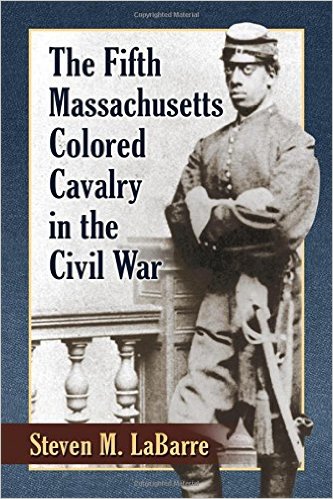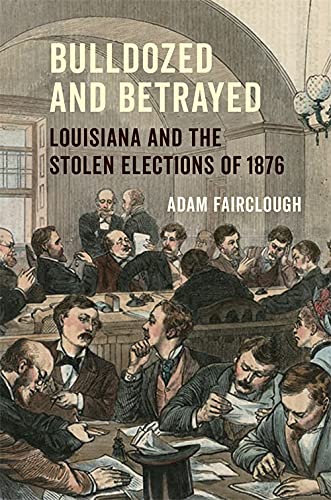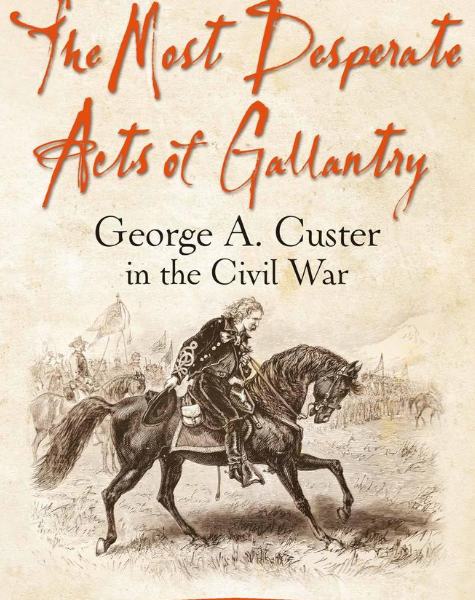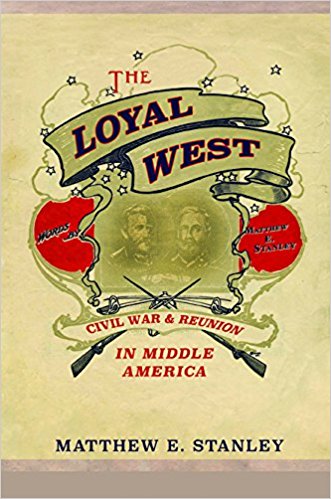The Fifth Massachusetts Colored Cavalry in the Civil War by Steven M. LaBarre. McFarland, 2016. Paper, ISBN: 978-1-4766-6384-5. $29.95.
 This book is a regimental history that examines the Fifth’s service during the war and the stories of the men who served in it. As one of seven black cavalry units that served the Union, the Fifth Massachusetts was comprised largely of northeastern freemen, including Frederick Douglass’ son Charles, who fought at Petersburg and guarded Confederate prisoners of war at Point Lookout. Steven LaBarre first became interested in this regiment as a boy when he discovered that he was related to a member of the Fifth, Joseph Brunson. LaBarre, who is white, researched his relative and discovered that the Fifth was a black regiment, and that his great-granduncle had been a black soldier. LaBarre’s personal interest in his family history continued and expanded, becoming the basis for the honors thesis that eventually resulted in this book. It is a welcome contribution to scholarship on black military service and will undoubtedly serve as a useful resource for further historical research.
This book is a regimental history that examines the Fifth’s service during the war and the stories of the men who served in it. As one of seven black cavalry units that served the Union, the Fifth Massachusetts was comprised largely of northeastern freemen, including Frederick Douglass’ son Charles, who fought at Petersburg and guarded Confederate prisoners of war at Point Lookout. Steven LaBarre first became interested in this regiment as a boy when he discovered that he was related to a member of the Fifth, Joseph Brunson. LaBarre, who is white, researched his relative and discovered that the Fifth was a black regiment, and that his great-granduncle had been a black soldier. LaBarre’s personal interest in his family history continued and expanded, becoming the basis for the honors thesis that eventually resulted in this book. It is a welcome contribution to scholarship on black military service and will undoubtedly serve as a useful resource for further historical research.
The book is chronological, beginning with the regiment’s formation in 1864 and ending with anecdotes of its veterans in the postwar era. In eight brief chapters, LaBarre examines each stage of the regiment’s service using regimental records, official correspondence, personal correspondence, and newspaper articles. He combines personal stories with official records to highlight realities of life in the unit, such as conflicts between officers and privates, at times linking the regiment’s service to larger events of the war. LaBarre gives a straightforward narrative of the unit and its members that echoes traditional regimental histories such as Luis F. Emilio’s A Brave Black Regiment and Thomas Wentworth Higginson’s Army Life in a Black Regiment.
Of primary interest to LaBarre is recognizing the soldiers of the Fifth “as individuals with real lives” (10). He claims that historians and readers are focused primarily on battles and great men rather than common people when it comes to the Civil War. While this assessment is not quite accurate in terms of historiography (historians of slavery and the Civil War, at least, have been conducting history “from the bottom up” for quite some time now), I trust LaBarre on general readers’ habits, given his position at a public library in Chicago.[1] Furthermore, this approach emphasizes the personal stories of individual black soldiers who otherwise would not have their stories told. Men such as Franklin Jennings emerge in this story. When Jennings joined the Fifth, he not only helped make history, he also left behind a paper trail—thus opening up lines of inquiry for historians. LaBarre discovered that Jennings’ father, Paul, was owned by James and Dolley Madison and manumitted by Daniel Webster. All three of Paul’s sons joined black regiments during the war (62-63).
While the anecdotes are multitudinous and entertaining, LaBarre does provide a level of detail that can sometimes obscure the narrative. Correspondence, for example, is presented in large block quotes. The author is clearly trying to let the sources—and by extension, the men—speak for themselves. However, there is much detail in these quotes that is not pertinent to the narrative. Space is therefore taken up with lists and details such as how Sibley tents are designed, leaving little room for deeper analysis of the men’s experiences in service. The author makes no claim to intervention or interpretive analysis, however, and presents an impressive array of research that will aid future work, including my own.
There is great potential in this book for examining the use of black cavalry in the Civil War. Considering that the Fifth Massachusetts Cavalry spent the majority of its service dismounted and acting as prison guards certainly merits further study. Comparing the use of white cavalries to black cavalries in the Civil War would prove useful to understanding whether the Fifth’s service was typical or not—and why. Furthermore, expanding the scope of this work to link black cavalrymen to black jockeys of the nineteenth century would no doubt spur work studying black men both on the home front and the battlefield, two areas that thus far remain separate spheres.
Historical works on black cavalrymen have largely focused on the Buffalo Soldiers, a nickname for the black 10th Cavalry Regiment formed in 1866 in Kansas. Little work has been done on the black cavalries that served during the Civil War, and LaBarre’s book is a useful and welcome contribution to that historiography. It should also prove to be an invaluable tool to those who, like LaBarre himself, are interested in genealogical research. Specialists and general readers alike will find this book illuminating.
C. Wood Newhall is a Ph.D. student in the History Department at University of North Carolina Chapel Hill.
[1]For a small sample of exemplary works using the stories of non-elites such as poor whites, enslaved blacks, and women in the United States, see Deborah Gray White, Ar’n’t I a Woman?: Female Slaves in the Plantation South (New York: Norton, 1985); Kathleen Brown, Good Wives, Nasty Wenches, and Anxious Patriarchs: Gender, Race, and Power in Colonial Virginia (Chapel Hill: University of North Carolina Press, 1996); Stephanie McCurry, Masters of Small Worlds: Yeoman Households, Gender Relations, and the Political Culture of the Antebellum South Carolina Low Country (New York: Oxford University Press, 1997); John Hope Franklin and Loren Schweninger, Runaway Slaves: Rebels on the Plantation (New York: Oxford University Press, 1999); Steven Hahn, A Nation under Our Feet: Black Political Struggles in the Rural South from Slavery to the Great Migration (Cambridge: Belknap Press, 2003); Thavolia Glymph, Out of the House of Bondage: The Transformation of the Plantation Household (New York: Cambridge University Press, 2009); Edward E. Baptist, The Half Has Never Been Told: Slavery and the Making of American Capitalism (New York: Basic Books, 2014).




